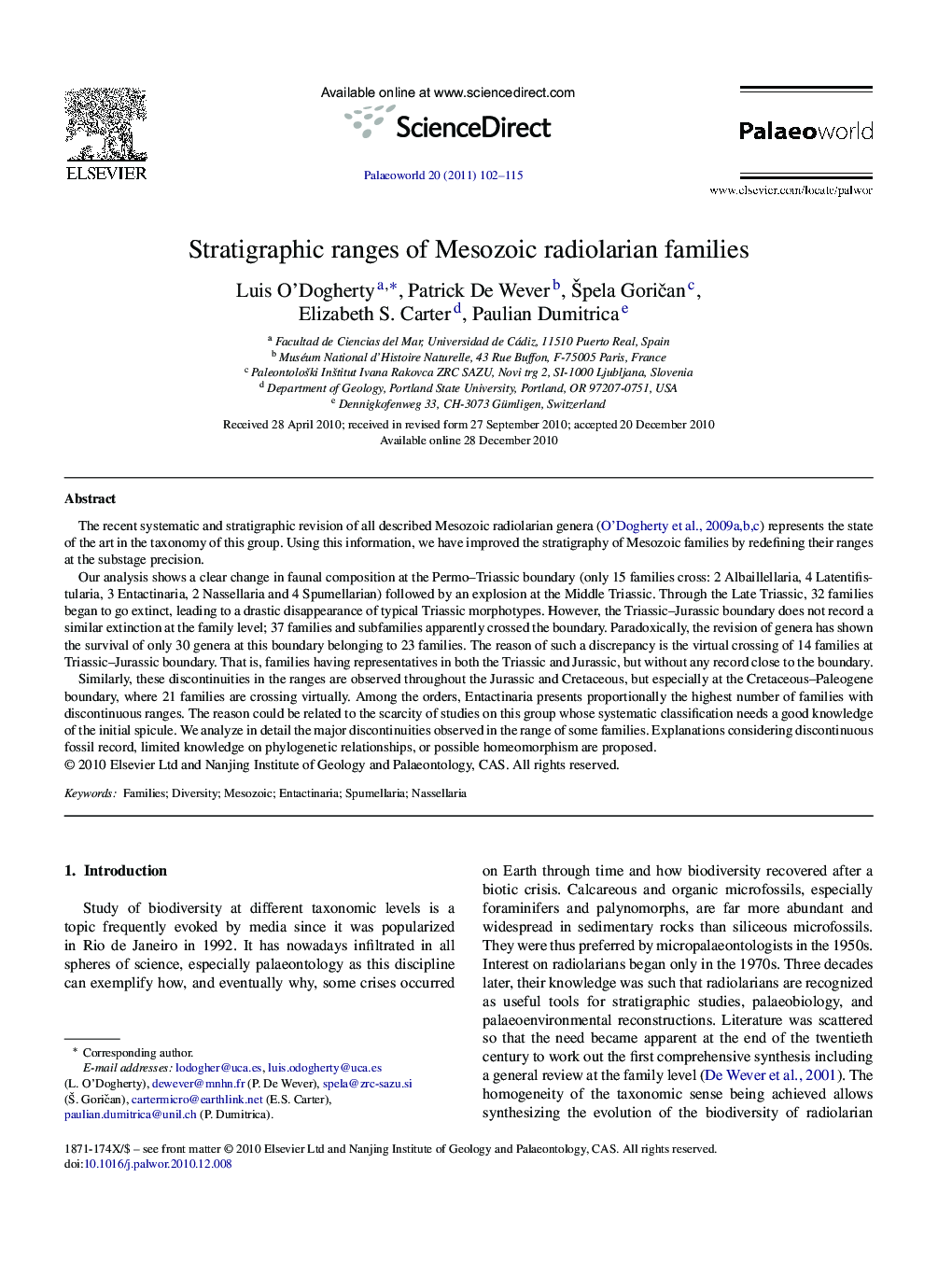| Article ID | Journal | Published Year | Pages | File Type |
|---|---|---|---|---|
| 4749880 | Palaeoworld | 2011 | 14 Pages |
The recent systematic and stratigraphic revision of all described Mesozoic radiolarian genera (O’Dogherty et al., 2009a, O’Dogherty et al., 2009b and O’Dogherty et al., 2009c) represents the state of the art in the taxonomy of this group. Using this information, we have improved the stratigraphy of Mesozoic families by redefining their ranges at the substage precision.Our analysis shows a clear change in faunal composition at the Permo–Triassic boundary (only 15 families cross: 2 Albaillellaria, 4 Latentifistularia, 3 Entactinaria, 2 Nassellaria and 4 Spumellarian) followed by an explosion at the Middle Triassic. Through the Late Triassic, 32 families began to go extinct, leading to a drastic disappearance of typical Triassic morphotypes. However, the Triassic–Jurassic boundary does not record a similar extinction at the family level; 37 families and subfamilies apparently crossed the boundary. Paradoxically, the revision of genera has shown the survival of only 30 genera at this boundary belonging to 23 families. The reason of such a discrepancy is the virtual crossing of 14 families at Triassic–Jurassic boundary. That is, families having representatives in both the Triassic and Jurassic, but without any record close to the boundary.Similarly, these discontinuities in the ranges are observed throughout the Jurassic and Cretaceous, but especially at the Cretaceous–Paleogene boundary, where 21 families are crossing virtually. Among the orders, Entactinaria presents proportionally the highest number of families with discontinuous ranges. The reason could be related to the scarcity of studies on this group whose systematic classification needs a good knowledge of the initial spicule. We analyze in detail the major discontinuities observed in the range of some families. Explanations considering discontinuous fossil record, limited knowledge on phylogenetic relationships, or possible homeomorphism are proposed.
